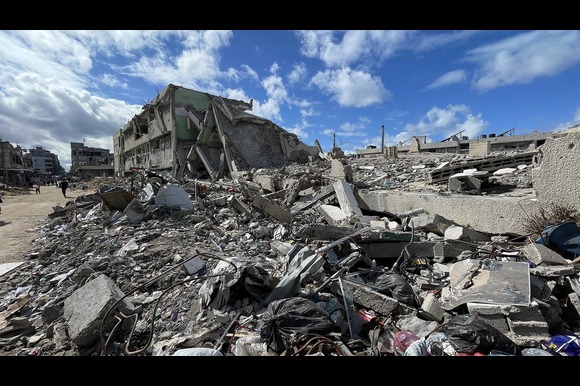
By Jaber Jehad Badwan
Mediators attempting to secure a ceasefire in Gaza have reportedly reached out to the head of Hamas’s military wing, who has made it clear that he does not accept the latest US ceasefire framework. According to BBC sources, the commander, Izz al-Din al-Haddad, believes the plan is designed to dismantle Hamas entirely, regardless of whether the group agrees to it, and is therefore determined to continue fighting.
Trump’s 20-Point Peace Framework
The proposal, crafted by US President Donald Trump, is a 20-point roadmap to end the war, already accepted by Israel. It requires Hamas to disarm fully and relinquish any future role in governing Gaza. While Israel has signaled its agreement, Hamas leaders view the conditions as an existential threat to their movement.
Divisions Within Hamas Leadership
Reports suggest divisions within Hamas regarding the proposal. Some members of Hamas’s political leadership based in Qatar are understood to be open to accepting the framework, provided certain adjustments are made. However, their influence appears limited because they do not control the fate of the hostages still being held in Gaza.
According to estimates, 48 hostages remain in Hamas’s custody in the Palestinian enclave. Of these, only about 20 are believed to still be alive. The fate of the hostages continues to play a pivotal role in ceasefire negotiations.
Hostages Remain Key Obstacle
A central sticking point is the US plan’s demand that Hamas release all hostages within the first 72 hours of the ceasefire. Many within the group see this as giving up their only significant bargaining chip at the start of negotiations.
Even though President Trump has offered assurances that Israel will honor the deal, Hamas leaders remain skeptical. Their distrust has been deepened by a recent Israeli air strike in Doha, which sought to assassinate Hamas leaders and took place in defiance of Washington’s position.
Concerns Over Stabilisation Force and Buffer Zone
Another major concern for Hamas is the proposal’s provision for a “temporary International Stabilisation Force” to be deployed in Gaza by the US and Arab states. Hamas leaders fear this would represent a new form of occupation under the guise of peacekeeping.
Additionally, a map of Israel’s phased troop withdrawal plan, circulated by the Trump administration, has revealed a “security buffer zone” along Gaza’s borders with Egypt and Israel. Details of how this zone would be managed remain unclear. If Israel is given oversight, the issue could emerge as another contentious obstacle to the deal.
Netanyahu Pushes Back on Key Terms
Although Israel initially accepted the US framework, Prime Minister Benjamin Netanyahu has appeared to distance himself from certain elements of the agreement.
In a video message shared on social platform X, Netanyahu declared that Israeli forces would remain in parts of Gaza indefinitely and insisted that Israel would “forcibly resist” the establishment of a Palestinian state.
These statements contradict the US framework, which requires a complete withdrawal of Israeli forces, aside from maintaining a narrow security perimeter until Gaza is considered secure from “resurgent terror threats.”
The US plan also suggests that once implemented, it could create a “credible pathway to Palestinian self-determination and eventual statehood.” Hamas, however, has repeatedly said it will not disarm until a sovereign Palestinian state is formally recognized.
Humanitarian Cost of the War
The war in Gaza began after the Hamas-led assault on southern Israel on 7 October 2023, which killed about 1,200 people and saw 251 others taken hostage. In response, Israel launched a sweeping military campaign against Gaza.
Since then, at least 66,225 Palestinians have been killed in Israeli strikes, according to Gaza’s Hamas-run health ministry. The devastation has left much of the enclave in ruins, with international agencies warning of catastrophic humanitarian conditions.




